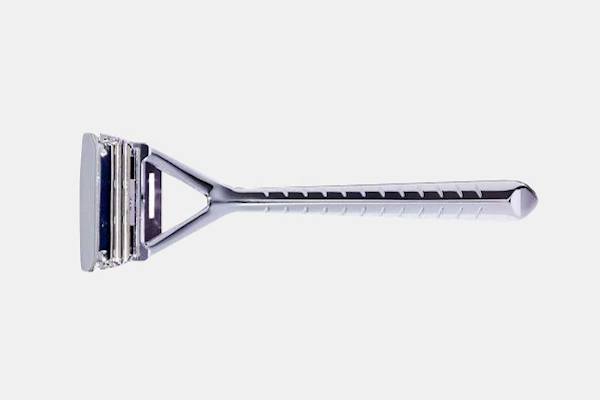10 Ways To Live More Sustainably
As we seek to reduce the environmental impact that all of us have, there are lots of small changes that we can make in our lives today. Changes that will make a large difference. Here we list 10 of our favorite and simple tips to living more sustainably. These are easy quick changes that you can make in your own home and life that will add up.
1. Turn Your Thermostat Down or Upgrade To Smart Thermostat
Adjusting your thermostat to heat your home a little less during the winter months and cool your home a little less during the summer months can make a big difference. What is more, this is easy to do when you are either away from the house during the day or asleep at night. According to Energy.gov adjusting your thermostat by 7-10 degrees for 8 hours a day could save you up to 10% a year off your heating and cooling bill. This is an easy change that allows you to use less energy for your home and reduce your carbon footprint, while also saving you money.
If you are looking for an upgrade to your home, there are now many great options on the market for smart thermostats. These clever devices will help optimize your heating and cooling make adjustments for you based upon your needs. A hands-off solution.
2. Hang Clothes Out To Dry Instead Of Using A Dryer
Hanging your clothes out on a washing line or a drying rack is another great way to reduce your carbon footprint while saving money. Dryers use energy in two ways when they dry your clothes: first by heating the dryer and second by turning the drum to spin the clothes. The average dryer uses approximately 3 kilowatts per hour to run. If a typical drying cycle is 45 minutes long, you will use 2.25 kilowatts every time you dry your clothes. A family of four can easily run the dryer each day in order to keep up with their laundry - you can do the math, but it adds up quickly. Hanging your clothes on a washing line or drying rack is a simple way to help cut back on energy consumption. There is also the added bonus of being gentler on your clothes.
3. Wash Your Clothes On Cold Water Setting
This is a big one, both for the planet and your wallet. Approximately 90% of the energy that your washing machine uses is to heat the water. By setting your washer to the cold setting, you will significantly reduce the energy consumed. Moreover, most washing detergents are designed to work equally well with both hot and cold water settings. Reduce your carbon footprint and save on your energy bill with this quick change.
4. Take Your Own Bags To The Grocery Store
Each year, consumers worldwide use approximately 1-trillion single-use plastic bags, according to the Earth Policy Institute. In the U.S. U.S. consumers use nearly one bag per day per person. As consumers examine ways to reduce their consumption of single-use plastics, taking your own reusable back to the store with you can make a big impact. Many retail stores will also bag your purchases automatically, if you don’t need a bag for an item, simply let the checkout clerk know. It all adds up.
5. Compost Your Organic Kitchen Waste
Composting is an excellent way to reduce the volume of waste that ends up in landfills. By collecting and composting your organic kitchen waste, you can quickly reduce the volume of items that end up in your rubbish and ultimately the landfill.
If you have a backyard, composting also provides fantastic benefits for your garden. As your food waste breaks down it can be added back into your garden as soil. This compost soil is super-charged with nutrients to help plants grow while also enhancing water retention. According to the
EPA, composting can also help both reduce methane emissions from landfills and also be used to repair damaged soil.
6. Ride A Bike
Next time you need head around the corner for an errand, consider riding a bike. If you live in a city you may also consider the benefits of riding your bike to work. Not only will this small change cut down on C02 emissions from running a car, but you will have the added benefit of doing some exercise.
While individuals who choose to ride a bike to commute in the United States is still a very small minority, it is gaining popularity. Many cities are now helping to support this growing trend with dedicated bike lanes and even city rental bike options. Help reduce emissions and get exercise at the same time, what's not to love.
7. Replace Plastic Wrap With Reusable Alternatives
Cling film or plastic wraps are one of those common household items that often escape attention. However, these plastics quickly end up in landfills and oceans where they do not break down. Their convenience masks the environmental impact that they have. The good news is that there are lots of excellent alternatives to help keep your food fresh. From Bees Wax wraps to reusable containers. This small change in how you store your leftovers or preserve food will make a significant difference.
8. Use A Water Bottle
As a population, we have fallen in love with drinking bottled water, but this habit does have some serious environmental implications. While drinking more water is fantastic for our health, the plastic bottles that it comes in can be devasting for the health of the environment. It is estimated that in the U.S. alone we go through approximately 50 billion water bottles per year, that majority of which are not recycled. By simply using a reusable water-bottle we can begin to cut back on the mountain of plastic bottles that are used every year. Making this easy switch can have a tremendously positive impact.
9. Switch To LED Lights
Will LED lights make your home greener? Yes, absolutely. LED (light-emitting diode) lights are a simple way to cut down on your carbon footprint while also saving money. According to Energy.gov LED lights use approximately 75% less energy than a traditional incandescent bulb and can last 25 times longer. Make the swap in your home and you will be taking a big step towards living more sustainably.
10. Upgrade Your Coffee Routine
Coffee is very important to many of us - one could even go so far as to say critical. However, quick single-serving k-cup coffee makers produce a lot of waste that simply ends up in landfills. Slow the process down a bit and use a coffee press or make a drip coffee in the morning. Many coffee machines also have reusable filters that are a great alternative too. Furthermore, when you are finished, you can compost your coffee grounds. Slow the process down and enjoy coffee in a more sustainable fashion.






